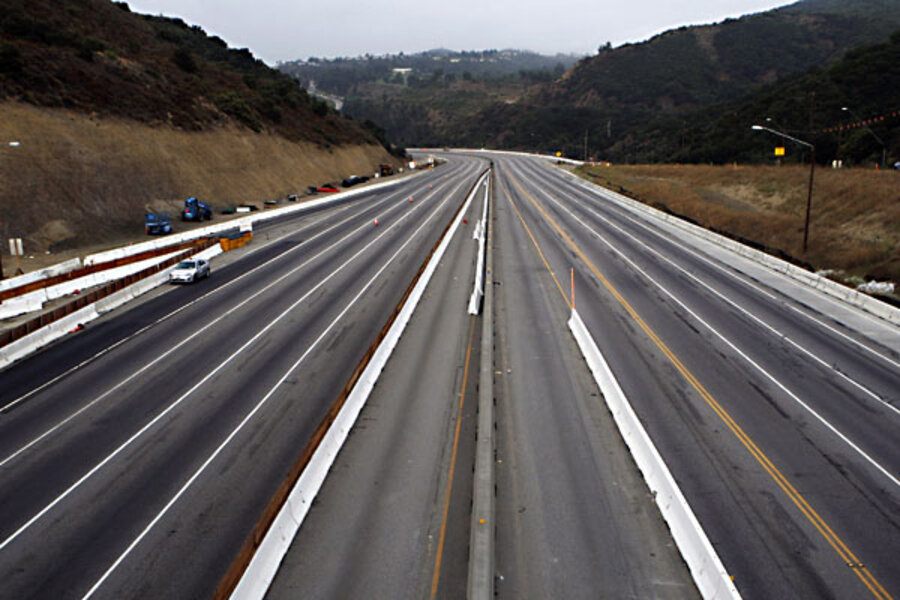Carmageddon II raises traffic concerns...to the sky?
Loading...
If you live in Southern California, you probably remember Carmageddon -- not the video game, not the pet name that some gave to the 2008/2009 auto industry bailout, but the closure of the 405, one of Los Angeles' busiest highways. Now, it's happening again, and once again, residents are concerned about its impact on their quality of life.
In July of last year, officials closed a section of the 405 for three days in order to demolish the south side of Mulholland Bridge, a messy but necessary step in a $1 billion highway improvement project. California officials urged residents who had to drive to stay as far away from the 405 as possible, warning of monumental traffic jams. Citizens panicked, the media predicted complete chaos, and in the end...well, in the end, it wasn't a big deal at all.
In fact, traffic over the Carmageddon weekend was pretty light, and the number of people using mass transit soared. In fact, Carmageddon was such a non-event that some people began asking if LA shouldn't promote car-free weekends more often.
LA being LA, residents quickly resumed their auto-centric habits as soon as Carmageddon wrapped up (17 hours ahead of schedule, thank you very much). But they're going to get the chance to break the 405 habit once more this weekend.
From 7pm today until 5am Monday, the same ten-mile stretch of the 405 will be shut down as construction teams -- you guessed it -- demolish the north side of the Mulholland Bridge so that it can be rebuilt wider and more seismically sound.
City officials are hoping that Carmageddon II -- which we affectionately dubbed "Carmageddon 2: Revenge of the Fallen: This Time, It's Electric Boogaloo (featuring Patty Smyth)" -- will go as smoothly as the first one. However, some who live near the soon-to-be-closed interstate have a new concern: traffic jams overhead.
According to the LA Times, there was one under-reported hitch in last year's Carmageddon:swarms of sightseers hovering in helicopters above the Westside neighborhood to catch a glimpse of the Mulholland Bridge's destruction. In fact, the situation was so bad that U.S. Congressman Howard Berman (D-Valley Village) proposed the Los Angeles Residential Helicopter Noise Relief Act, which would have allowed the Federal Aviation Administration to set rules governing flight paths for helicopter operators in LA.
Alas, Berman's bill seems to have stalled, so officials are now asking insisting that helicopter pilots be considerate and reasonable over the weekend. While news crews will undoubtedly be on hand for the event, Sherman Oaks board director Bob Anderson has demanded that well-heeled gawkers "stop having wine and cheese parties on helicopters to watch the bridge come down."
Live in LA? What are your plans for the weekend? Will you find alternative fun to pass the time like Artmageddon, or will you ignore Anderson's request and take to the skies?







